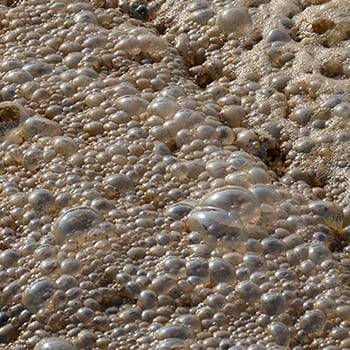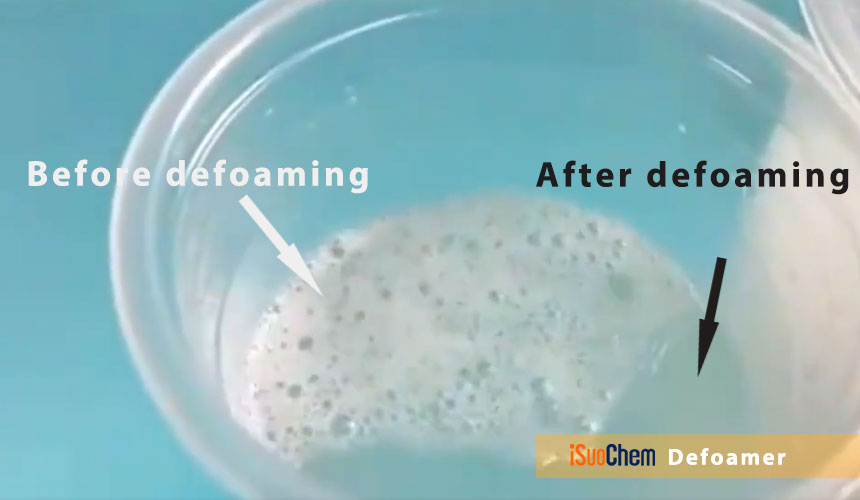The Importance of Defoamers in Industrial Processes and Applications
Discover the Leading Benefits of Using Defoamers in Industrial Processes
The utilization of defoamers in commercial processes offers a variety of compelling advantages that can enhance functional efficiency and product top quality. By successfully controlling foam manufacturing, these agents not just optimize product flow however likewise contribute to substantial cost decreases and improved sustainability. Their application covers numerous industries, which questions regarding their duty in mitigating environmental influence while guaranteeing regular output. Recognizing these advantages is vital for industries aiming to refine their procedures. The implications of embracing defoamers may be a lot more profound than at first regarded. What specific advantages could your organization harness?
Improved Refine Performance
Optimizing industrial procedures usually entails addressing lathering concerns, which can prevent functional performance. Foam formation can hinder the proper performance of equipment, lower the efficient usage of sources, and make complex the surveillance of vital parameters. By implementing defoamers, industries can effectively minimize these problems, causing structured operations and improved performance.
Defoamers work by destabilizing the foam structure, enabling for quick collapse and significant reduction in foam quantity. This activity not only enhances the circulation of products via devices, such as pipes, activators, and mixers, yet also lessens disturbances triggered by foam overflow. Subsequently, tools downtime is reduced, enabling a much more effective and constant production process.
In addition, the usage of defoamers can bring about reduced power usage. With much less foam to take care of, pumps and compressors can operate a lot more effectively, resulting in reduced functional expenses and an overall improvement in procedure throughput. Inevitably, the critical use defoamers not just addresses prompt foaming challenges however likewise contributes to an extra reliable industrial ecosystem, promoting an affordable benefit in a demanding market.
Improved Item High Quality
The assimilation of defoamers in industrial processes plays an important duty in improving item top quality. By effectively managing foam formation, defoamers add to the uniformity and harmony of last items. Excessive foam can bring about aeration, which negatively influences the texture and stability of formulations, specifically in sectors such as food and pharmaceuticals, beverages, and coatings.

Furthermore, defoamers facilitate much better blending and diffusion of components, leading to homogeneity in solutions. This is crucial in applications where exact ingredient ratios are crucial for performance and safety and security. In addition, the elimination of foam can lower the danger of contamination throughout production, further guarding product honesty.
Inevitably, by enhancing item high quality, defoamers not just improve consumer complete satisfaction but likewise reinforce brand name credibility. Their role in keeping top notch requirements highlights their significance in modern commercial procedures.
Cost Reduction Benefits
Carrying out defoamers in industrial processes can lead to significant expense reduction benefits. By properly regulating foam development, defoamers reduce product loss during manufacturing, therefore maximizing material use. This decrease in waste converts straight right into reduced raw product expenses, improving general functional effectiveness.
Moreover, making use of defoamers can decrease power consumption. Excessive foam can impede equipment efficiency, bring about increased power needs to preserve manufacturing levels. By mitigating foam, defoamers assist in smoother operations, allowing equipment to run more effectively and web lowering power expenses.

Additionally, defoamers can shorten handling times. By using defoamers, sectors can enhance their processes, leading to faster turn-around times and boosted throughput.

Environmental Influence Reduction
In industrial procedures, the usage of defoamers plays a critical function in mitigating environmental effects connected with foam generation. Foam can cause substantial operational inadequacies, resulting in enhanced emissions and waste generation. By effectively regulating foam, defoamers assist maintain procedure efficiency, thereby reducing the total ecological footprint of operations.
Moreover, extreme foam can overflow control systems, causing spills that might infect soil and water resources. Defoamers help decrease this threat by guaranteeing that foaming does not exceed suggested limits, advertising conformity with environmental laws. This proactive approach not only safeguards environments yet also enhances the sustainability of industrial practices.
In addition, using defoamers can reduce energy consumption in different procedures. defoamers. Minimizing foam development diminishes the requirement for extra energy-intensive steps, such as raised frustration or pumping, which may otherwise be needed to manage foam. The adoption of defoamers lines up with broader sustainability objectives by advertising energy efficiency while decreasing the carbon footprint of commercial tasks.
Eventually, incorporating defoamers into commercial procedures is a tactical measure that supports ecological stewardship and liable resource management.
Adaptability Across Industries
Throughout different industries, defoamers show exceptional convenience, adjusting to the certain demands of varied applications. In the food and drink field, as an example, defoamers are vital to keeping item quality by protecting against foam development during processing, which can influence appearance and flavor. Similarly, in the pharmaceutical sector, defoamers make sure the security of formulations, improving product effectiveness and uniformity.
In the chemical manufacturing realm, defoamers facilitate smoother procedures by minimizing foam in reaction vessels, therefore boosting yield and investigate this site minimizing downtime. The paper and pulp industry relies upon defoamers to boost the efficiency of pulp handling and paper manufacturing, guaranteeing optimal item honesty. try this web-site Furthermore, in wastewater treatment centers, defoamers play a vital function in managing foam during aeration procedures, leading to better treatment results.
The adaptability of defoamers reaches the oil and gas industry, where they aid in handling foam in drilling fluids and manufacturing processes. By tailoring formulations to fulfill particular industry demands, defoamers work as important devices that enhance functional effectiveness, product quality, and overall process effectiveness throughout a wide range of fields. Their versatility highlights their value in contemporary industrial applications.
Conclusion
To conclude, the utilization of defoamers in commercial processes provides many advantages, including boosted performance, enhanced item quality, substantial price decreases, and favorable environmental effects. Their capacity to effectively control foam formation adds to functional connection and source optimization. Additionally, the convenience of defoamers across varied markets underscores their important function in advertising lasting practices and success. The assimilation of defoamers stands for a strategic technique to dealing with difficulties related to foam management in various manufacturing atmospheres.
Inevitably, the calculated use of defoamers not only addresses prompt foaming difficulties but additionally adds to a much more reliable industrial ecological community, cultivating an affordable advantage in a requiring market.
In commercial procedures, the use of defoamers plays a crucial role in mitigating environmental influences associated with foam generation. By efficiently controlling foam, defoamers help preserve process effectiveness, consequently decreasing the overall ecological footprint of operations.
Additionally, in wastewater therapy centers, defoamers play a vital function in managing foam throughout aeration processes, leading to improved therapy end results.
